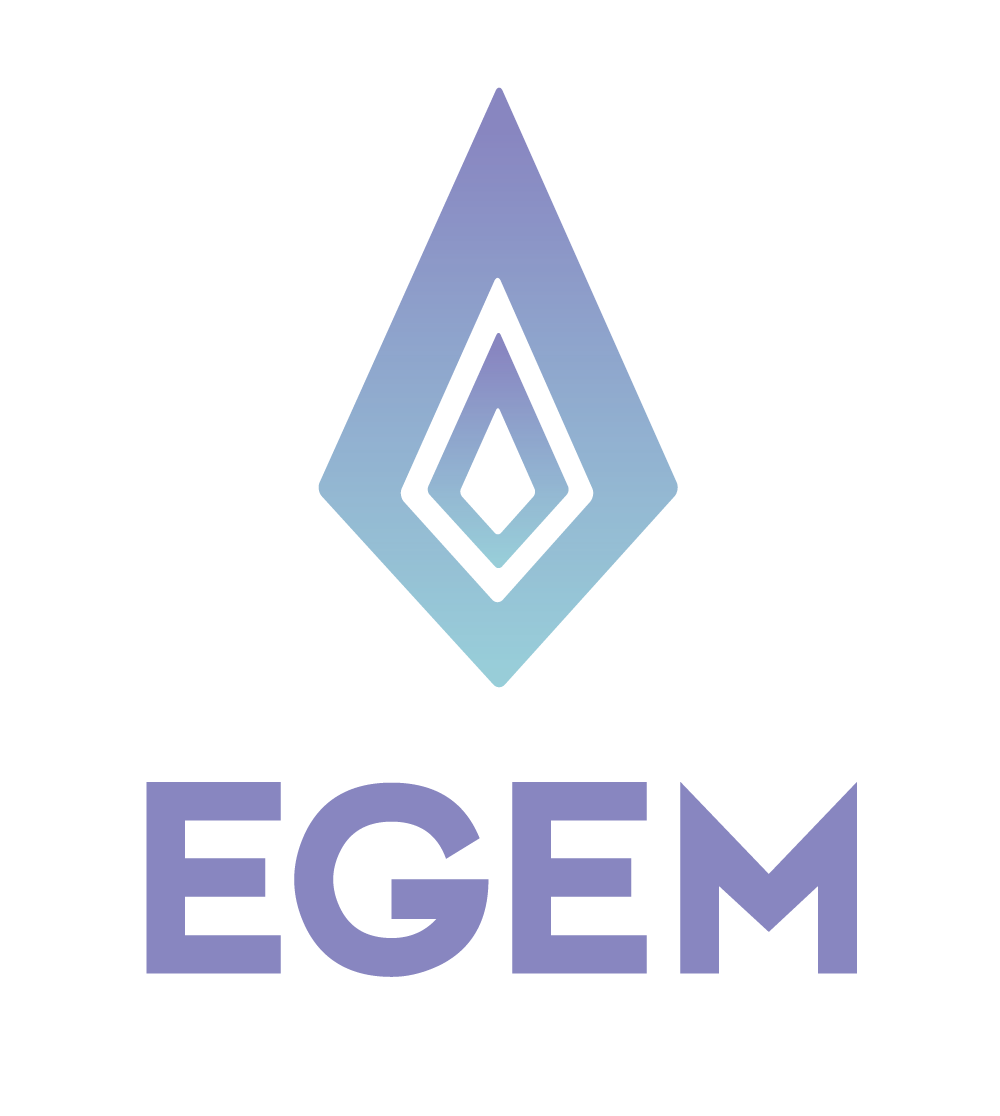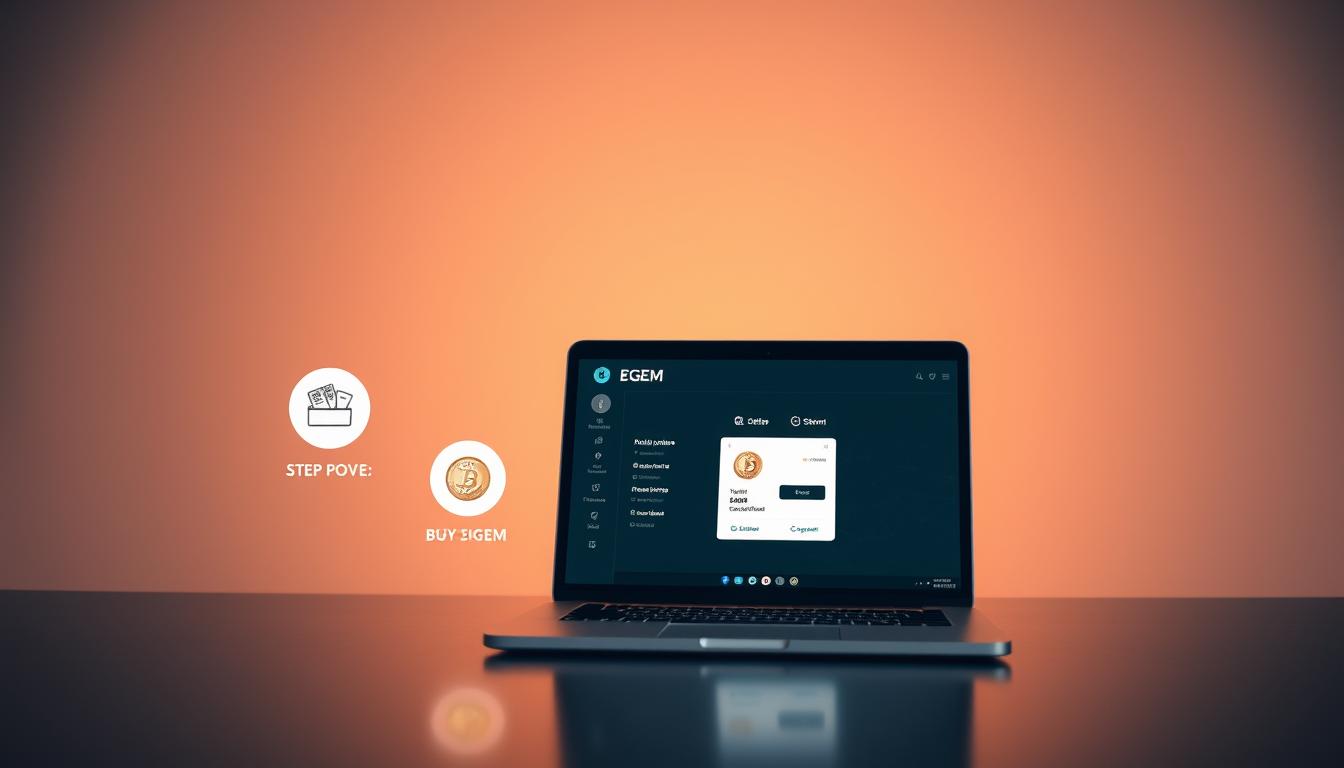Did you know that 97% of cryptocurrency investors make their first purchase without fully understanding the process? I learned this lesson the hard way when I started investing in digital assets.
Buying egem cryptocurrency differs from mainstream tokens. It’s not complex, but requires proper preparation and tools. This guide shares essential knowledge I wish I had when starting out.
You’ll learn practical strategies I’ve tested myself. We’ll cover everything from wallet setup to making your first EGEM purchase.
The cryptocurrency market is booming. Projects like BlockDAG have raised over $321 million with potential 2,660% returns. EGEM holds a unique position in this landscape.
I’ll guide you through each investment stage using real experience. You’ll get actionable knowledge that works, without any fluff.
Key Takeaways
- EGEM requires specific platforms and wallets different from mainstream cryptocurrencies
- Proper preparation prevents costly mistakes that 97% of new investors make
- Understanding market timing and entry points maximizes your investment potential
- Security measures protect your digital assets throughout the purchasing process
- Real-world testing reveals which tools and strategies actually work
- EGEM’s unique market position offers distinct opportunities for informed investors
Understanding EGEM Crypto and Its Significance
EGEM is a unique cryptocurrency worth exploring. Successful investors focus on understanding project fundamentals. This approach helps avoid following market hype blindly.
The crypto market is crowded with competing projects. Established tokens like BNB have high forecast averages. Newer projects like EGEM show different growth patterns that need careful study.
What is EGEM?
EGEM is a proof-of-work blockchain focused on community-driven growth. It maintains the security model that made Bitcoin successful. The project aims to create an accessible blockchain ecosystem.
EGEM allows developers to build apps with lower transaction costs than Ethereum. This makes it attractive for smaller projects and individual developers. The team has implemented features to reduce energy use while keeping the network secure.
EGEM stands out for its long-term sustainability commitment. This approach addresses a major criticism of proof-of-work cryptocurrencies today.
The Use Cases of EGEM
EGEM serves multiple purposes in the digital economy. Its main use is smart contract deployment. These contracts run automatically when set conditions are met.
The platform supports decentralized finance applications. Users can join lending protocols, yield farming, and provide liquidity. These features offer earning chances beyond just holding tokens.
Gaming is a growing sector for EGEM. Low fees make it good for in-game purchases and NFT trading. Several games already use EGEM for their virtual economies.
Understanding these uses helps evaluate EGEM’s long-term potential. Real-world applications often drive sustainable growth better than speculation alone.
Market Positioning and Competitors
EGEM competes in a tough market led by established players. Ethereum leads in smart contracts. Newer projects like Solana and Cardano offer different tech approaches.
EGEM focuses on accessibility and community governance. Its market cap is much smaller than major competitors. This creates both opportunities and risks for potential investors.
| Cryptocurrency | Consensus Mechanism | Transaction Speed | Average Fees | Smart Contracts |
|---|---|---|---|---|
| EGEM | Proof of Work | 15 seconds | Low | Yes |
| Ethereum | Proof of Stake | 12 seconds | High | Yes |
| Bitcoin | Proof of Work | 10 minutes | Variable | Limited |
| BNB | Proof of Authority | 3 seconds | Very Low | Yes |
Consider your investment timeline and risk tolerance when comparing EGEM to competitors. Established projects offer stability but limited growth. Newer projects like EGEM have higher risk-reward ratios.
Analyze both technical basics and market trends when considering EGEM. Its community-focused model creates chances for early adopters. This approach suits those who believe in grassroots blockchain growth.
EGEM’s focus on practical uses positions it well for the evolving crypto landscape. As more institutions adopt crypto, strong technical projects often outperform speculative tokens.
Setting Up Your Crypto Wallet
Choosing the right wallet is crucial for your EGEM coin investment. Poor wallet management can lead to lost funds. A secure digital vault is essential before buying any crypto.
Your crypto wallet functions like a personal bank account. However, you bear more responsibility. There’s no customer service if you lose your private keys.
Mobile-first crypto solutions are gaining popularity. BlockDAG’s X1 App serves over 2 million users in 100+ countries. This shows the importance of accessibility in crypto.
Types of Crypto Wallets
Hardware wallets offer the highest security for crypto storage. Devices like Ledger and Trezor keep private keys offline. They cost $60-120 but protect thousands in crypto.
Software wallets balance security and convenience. MetaMask is popular for ERC-20 tokens like EGEM. It’s free, browser-based, and connects easily with exchanges.
Mobile wallets are great for on-the-go transactions. Trust Wallet and Coinbase Wallet lead this category. They’re convenient but not ideal for large amounts.
Exchange wallets hold your crypto after purchase. They’re not recommended for long-term storage. Exchanges can be hacked, and accounts frozen.
- Hardware wallets: Maximum security, offline storage
- Software wallets: Good security, high convenience
- Mobile wallets: Moderate security, maximum portability
- Exchange wallets: Lowest security, trading convenience only
How to Choose the Right Wallet for EGEM
Your wallet choice depends on technical comfort, investment size, and usage patterns. First, verify EGEM compatibility. Most major wallets support ERC-20 tokens.
For beginners, MetaMask is a good start. It’s user-friendly and widely supported. You can upgrade to hardware storage as your holdings grow.
Investment size matters. Here’s my personal rule:
- Under $500: Mobile or software wallet is fine
- $500-$5,000: Definitely get a hardware wallet
- Above $5,000: Hardware wallet is non-negotiable
Your usage patterns influence wallet choice. Day traders might use exchange wallets for speed. Long-term holders should prioritize security over convenience.
Take backup and recovery seriously. Write down your seed phrase and store it safely. Losing this phrase means losing your crypto forever.
Mobile-first solutions are changing crypto interactions. User experience is becoming as important as security. Choose a wallet that fits your specific needs.
Start with a reputable software wallet like MetaMask. Learn the basics, then upgrade your security as your knowledge grows. Your wallet setup will evolve with time.
Selecting a Cryptocurrency Exchange
Not all exchanges treat EGEM traders equally. This becomes clear when trying to make your first EGEM purchase. Selecting the right platform requires more strategy than most realize.
The exchange landscape has changed dramatically. Major players like Binance dominate with over 90 million users globally. Finding EGEM often means venturing beyond these mainstream platforms to specialized exchanges.
Your exchange choice impacts every aspect of your trading experience. Fee structures, security protocols, and token availability vary greatly. I keep detailed spreadsheets comparing platforms to track these differences.
Popular Crypto Exchanges for Buying EGEM
Most traditional exchanges don’t offer EGEM coins directly. Decentralized exchanges (DEXs) often provide the best access to EGEM tokens. Uniswap and SushiSwap frequently list EGEM pairs, but liquidity can be unpredictable.
For EGEM acquisition, consider these platform types:
- Decentralized Exchanges: Uniswap, SushiSwap, and PancakeSwap offer direct EGEM trading pairs
- Specialized Platforms: Smaller exchanges that focus on emerging tokens
- Peer-to-Peer Networks: Direct trading through EGEM community platforms
Each option has its pros and cons. DEXs provide immediate access but require external wallets. Specialized exchanges offer traditional interfaces but may have lower liquidity.
Comparing Fees and Services Offered
Fee structures are crucial when acquiring EGEM coins. Smaller tokens often carry higher trading costs. I track three main fee types across platforms:
- Trading fees: Range from 0.1% to 0.75% per transaction
- Network fees: Gas costs for Ethereum-based tokens like EGEM
- Withdrawal fees: Often fixed amounts that disproportionately impact smaller purchases
Binance charges 0.1% trading fees but doesn’t list EGEM directly. Uniswap offers EGEM access, but gas fees can exceed $50 during network congestion.
The cheapest advertised rate rarely equals the lowest total cost when you factor in all variables. Security features also vary significantly between platforms.
Established exchanges provide insurance funds and cold storage. DEXs rely on smart contract security. Always verify that platforms use multi-signature wallets and regular security audits.
Creating an Account on a Crypto Exchange
Setting up a crypto exchange account involves complex verification processes. These can delay your EGEM crypto buying steps for weeks. My first exchange signup took a month due to unfamiliar documentation requirements.
The regulatory landscape has changed significantly. Now, government IDs, proof of address, and video calls are often needed. This is a far cry from the simple email confirmations of the past.
Step-by-Step Account Setup Guide
Most exchanges follow a similar account setup process. Here’s what works best:
- Choose your username and password – Use a unique, complex password that you haven’t used elsewhere
- Provide basic information – Full legal name, date of birth, and country of residence
- Verify your email address – Check your spam folder if the confirmation doesn’t arrive within minutes
- Enable two-factor authentication – This step is crucial for account security
- Complete phone verification – Most exchanges require SMS verification for additional security
The process seems simple until you reach the verification requirements. Each exchange has different standards and approval speeds.
Identity Verification Requirements
The identity verification process is the biggest hurdle in the egem crypto buying steps. Your verification level affects your trading limits. Higher-tier verification may be needed for larger EGEM purchases.
Use this document checklist to speed up the verification process:
- Government-issued photo ID – Driver’s license, passport, or state ID card
- Proof of address – Utility bill, bank statement, or rental agreement (must be recent)
- High-quality photos – Clear, well-lit images without shadows or glare
- Selfie with ID – Some exchanges require you to hold your ID next to your face
Verification levels often create trading restrictions. Basic verification might limit you to $1,000 daily purchases. Full verification could allow $50,000 or more.
Having your documents ready in the correct format saves time. Scan everything at high resolution and save multiple copies. Proper preparation can reduce waiting times from weeks to days.
Pro tip: Start your account setup before you’re ready to buy. This way, you won’t miss good EGEM entry points while waiting for approval.
Funding Your Exchange Account
New investors often face unexpected fees and delays when funding their accounts. Choosing the right method can save money and frustration. This guide will help you navigate the process of buying EGEM crypto.
Each funding option has its pros and cons. Your choice affects both cost and speed. Some banks are more crypto-friendly than others, so I use multiple institutions.
Available Deposit Methods
Bank transfers are the most cost-effective way to fund your account. Wire transfers cost $15-30 but have low percentage fees for large deposits. ACH transfers are usually free but take 3-5 days to clear.
Credit and debit cards offer instant access but have high fees. Exchanges charge 3-4%, and banks may treat it as a cash advance. This can cost you 6-8% before buying EGEM.
Cryptocurrency deposits are another option if you have other digital assets. These transfers are usually free or have minimal network fees. Consider tax implications when converting one crypto to another.
Some exchanges accept PayPal, Venmo, or other digital payment services. These methods are convenient but often have high fees and low deposit limits. They’re best for small test purchases.
Exchange Fee Structures Explained
Understanding fee structures helps avoid costly surprises. Most exchanges display fees clearly, but real costs can hide in conversion rates and withdrawal minimums.
Deposit fees vary greatly between payment methods. Bank transfers might be free, while expedited options can cost $25-50. Card payments typically range from 2.5% to 4.5%.
Currency conversion adds another expense. If you’re depositing USD to a EUR-based exchange, expect conversion spreads of 0.5-1.5%. These small percentages add up on larger deposits.
Some exchanges offer promotions for new users or specific deposit methods. I’ve seen card deposit fees reduced to 1.5% or free wire transfers for a month. These offers change often, so timing your funding can save money.
Be aware of hidden fees from your bank. International wire fees and foreign transaction charges can double your costs. Always check with your bank before making large crypto-related transfers.
Purchasing EGEM: The Step-by-Step Process
Clicking the buy button changes everything in your crypto journey. Buying EGEM cryptocurrency becomes real after months of research. Many beginners rush through this crucial step, often regretting their approach later.
The purchase process depends on how EGEM trades against major currencies. Most exchanges list EGEM against Bitcoin or Ethereum. You’ll need to convert your fiat currency first, adding complexity for newcomers.
Placing a Buy Order
Order types can be tricky for beginners. Market orders execute immediately, while limit orders wait for your specified price. With lower-volume tokens like EGEM, market orders can cause significant slippage during volatile periods.
Limit orders are safer after experiencing a market order executing 8% higher than displayed. Here’s how to place a limit order:
- Navigate to the EGEM trading pair on your exchange
- Select “Limit Order” from the order type menu
- Enter your desired purchase price slightly above current market price
- Specify the quantity of EGEM you want to buy
- Review the total cost including fees before confirming
Timing matters more than most people realize. EGEM follows broader crypto market patterns. Better entry points often occur during weekday morning hours when trading volume stabilizes.
Monitoring Your Investment
After your order fills, the real work begins. EGEM’s price can shift dramatically overnight. Use exchange alerts and portfolio tracking apps to stay informed without obsessing.
A good monitoring system includes:
- Price alerts set at 10% intervals above and below your entry point
- Portfolio tracking apps that aggregate data from multiple exchanges
- Weekly chart analysis to identify longer-term trends
- News alerts for EGEM-related developments
Create systems that inform you of significant movements without causing constant anxiety. Set alerts and check them regularly, but not obsessively.
Successful monitoring requires discipline. Remember that crypto volatility is normal. Your EGEM investment will fluctuate, sometimes dramatically. Avoid panic selling, as it usually results in losses.
Storing EGEM Safely
Buying EGEM is only half the battle. Storing it safely is crucial. The phrase “not your keys, not your crypto” can save you from significant losses.
Security breaches and exchange hacks are common in crypto. Proper storage practices are essential for protecting your investment. Keep small trading amounts on exchanges.
Best Practices for Crypto Storage
Hot storage refers to wallets connected to the internet. Cold storage keeps your crypto offline. Each serves different purposes in a complete storage strategy.
Here are the storage methods I use, ranked by security level:
- Hardware wallets – Most secure for long-term storage
- Desktop wallets – Good balance of security and accessibility
- Mobile wallets – Convenient for small amounts
- Exchange wallets – Only for active trading
EGEM, like many altcoins, requires wallet compatibility checks. Always verify compatibility before transferring funds. Double-checking this step prevents costly mistakes.
Backup procedures are crucial. People lose access to crypto by not backing up seed phrases properly. Your seed phrase recovers your wallet.
Store seed phrases offline in multiple secure locations. Never store them digitally or take screenshots. Write them on paper or metal backup plates.
When to Move to a Private Wallet
Moving EGEM off an exchange depends on several factors. Consider the amount you’re holding, trading frequency, and risk tolerance.
Here’s my personal framework for storage decisions:
- Amount threshold – Move amounts over $1,000 to private storage
- Trading frequency – Keep only active trading funds on exchanges
- Time horizon – Long-term holdings belong in cold storage
- Exchange reputation – Research the platform’s security history
Hardware wallets offer the best security for long-term EGEM storage. Start with a reputable brand like Ledger or Trezor. These devices keep your private keys offline.
Most modern devices include step-by-step setup guides. Practice sending small amounts before moving larger holdings. This practice prevents expensive mistakes during the learning process.
Consider your technical comfort level when choosing storage methods. Some prefer keeping everything on exchanges. This increases risk but suits traders needing quick fund access.
Regular security audits help maintain protection. Review your storage methods every few months. Check backup integrity and update wallet software.
The best storage solution is the one you understand completely and can manage consistently.
Perfect security doesn’t exist. Find the right balance between security and usability for your situation. Your storage plan should match your investment strategy and skills.
Analyzing EGEM for Investment Decisions
Analyzing EGEM before buying can prevent costly mistakes. Crypto sentiment shifts quickly, unlike traditional markets. I use a system that mixes technical indicators with fundamental analysis.
Good investments need more than price charts. Understanding market dynamics and tracking key metrics is crucial. Building a framework for crypto’s unique environment is essential.
Market Trends and Predictions
Cryptocurrencies show different patterns with Bitcoin. Some stay independent during downturns, while others follow trends. EGEM’s correlation with Bitcoin reveals its potential behavior.
I watch three main trend indicators for EGEM. The 30-day correlation with major cryptos shows independence. Trading volume patterns reveal genuine interest. Social media sentiment helps predict short-term price changes.
Projects with low correlation to Bitcoin offer better diversification. They can be unpredictable during market stress. EGEM’s data suggests some independence, which could balance your portfolio.
Crypto prediction models differ from traditional assets. Sentiment shifts happen in hours, not days. For smaller tokens like EGEM, news and updates impact prices more than established cryptocurrencies.
Key Performance Indicators (KPIs)
I use five critical KPIs to evaluate EGEM. Consistent trading volume matters more than spikes. Market cap trends over 90 days show sustainable growth. GitHub activity reveals team commitment.
Community growth metrics hint at long-term adoption. I track active wallets, social media engagement, and developer forum activity. These often predict price moves before technical analysis does.
| KPI Category | Primary Metric | Evaluation Frequency | Weight in Decision |
|---|---|---|---|
| Technical | Volume-weighted average price | Daily | 25% |
| Fundamental | Development activity score | Weekly | 30% |
| Market | Bitcoin correlation coefficient | Monthly | 20% |
| Community | Active wallet growth rate | Monthly | 25% |
My framework combines numbers with quality factors. Development team transparency and communication build trust. Good partnerships beat many empty announcements.
Risk assessment is key when buying EGEM. I limit small-cap tokens to 5% of my crypto portfolio. This allows for potential gains while keeping risks manageable.
Frequently Asked Questions About Buying EGEM
Acquiring EGEM coins is simpler than you might think. Let’s address common concerns for newcomers to cryptocurrency.
Security Worries and Technical Fears
Buying EGEM doesn’t require advanced tech skills. Modern exchanges have made the process user-friendly. You can make your first purchase without understanding blockchain programming.
Security concerns are manageable with proper precautions. Use reputable exchanges like Coinbase or Binance. Enable two-factor authentication on all accounts. Start with small investments as you learn.
Avoid scams by using established platforms. Never share your private keys or wallet passwords. Be wary of promises of guaranteed returns.
Learning Resources and Support Tools
CoinGecko offers reliable market data. Reddit’s cryptocurrency communities share user experiences and EGEM acquisition tips. These resources can help you navigate the crypto world.
YouTube channels like Coin Bureau explain complex topics simply. Begin with beginner playlists before exploring advanced trading strategies. The learning curve is manageable with the right resources.
Expect to make mistakes in your first year. Each error teaches valuable lessons about risk management. Remember that cryptocurrency markets are highly volatile. Only invest what you can afford to lose.





